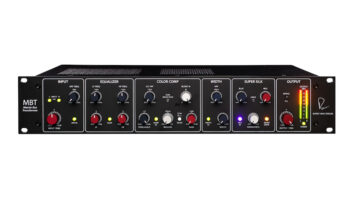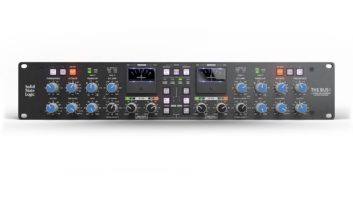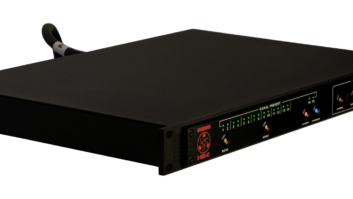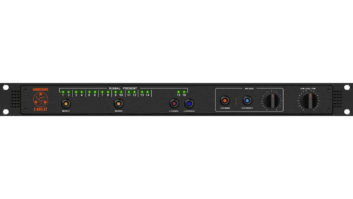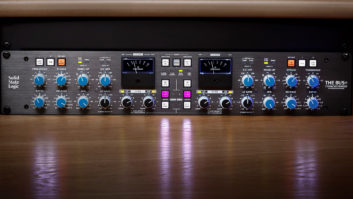THE STATE oF THE STANDARDSRight off the bat, let’s dispel the lack of respect for our elders that we brazenly exhibit here in the States: SCSI isn’t dead. It won’t be toppled over by stylish Fibre Channel or bargain basement UDMA just yet. Same goes for PCI: It isn’t going to be replaced anytime soon by cheesy ESA or shiny new Infiniband. In computer years-akin to dog years-the PCI and SCSI standards are ancient and venerable. Yet, they belie their age, continuing to outlast and outperform rival factions.
And, indeed they should. Lots of individuals work overtime to trim and tone these standards to maintain their fighting weight. Take SCSI, the Small Computer Systems Interface. According to Dataquest, currently 95% of the high-end disk drives shipped are SCSI attach devices. Pioneered by our friends at Apple Computer in the 1986 vintage Mac Plus, the original spec called for a 5MB/second transfer rate. Four generations later, the current Ultra160 tome describes, duh, a 160MB/s rate. Faster than the current generations of FireWire and USB (Universal Serial Bus). But wait, aren’t both FireWire and USB destined for double-speed updates? You betcha, but so is SCSI. The sixth generation is in incubation, moving toward deployment next year. And, as the MotorWeek boys would say, there’s lots to like about the new Ultra320!
Let’s start with clocking, the heart of all digital prestidigitation. In next-gen SCSI, the clock rate remains the same. Data transactions, however, can occur on both the rising and falling edge of the clock, so called dual-edge clocking. This doubles the data throughput while ensuring backward compatibility with those legacy devices with which you have a bootless and sentimental attachment.
Speaking of attachments, another new feature is domain validation. This is a nice label for enhanced, embedded bus diagnostics and expander communication. Domain validation automagically identifies problems and negotiates solutions, dealing with difficulties such as bone-headed users and damaged wires. Wide drives on narrow cables, nonexistent termination, crappy cable assemblies and dreaded expansion chassis are all handled in stride. The result is that all SCSI segments operate at the maximum speed of the participant’s abilities, no more and no less. This translates into reduced frustration on the part of the poor second who was told to “get that drive with the vocal parts up fast.”
Other enhancements to future generations of SCSI include intelligent testing and dynamic equalization to optimize the transmission line and a new packetized data protocol to reduce transmission overhead. But, to maintain a position of power, you need more than attractive measurements; you need powerful friends. For Ultra320, and especially the up-and-coming Ultra640, you need PCI-X. Good ol’ 66MHz PCI, with a throughput of 532 MB/s, can’t deal with the 640 MB/s that two Ultra320 channels require. PCI-X, running at 133 MHz, can sustain 1,024 MB/s throughput. That’s plenty enough guts for two channels of Ultra320 or one channel of Ultra640.
Dressed in the most fly logo in the computer industry, PCI-X will soon be winning the hearts of all the peripheral, chip set, system and development tool vendors for the same evolutionary reasons that Ultra320 and 640 will succeed: backward compatibility with high-performance and enhanced capabilities. A 64-bit implementation running at 133 MHz delivers over 1GB/s of data throughput. That’s enough meaty goodness to take on Gigabit Ethernet. There is yet another feature to look forward to that’s near and dear to my heart: Both PCI-X and Ultra320 will be adding hot plugging to their spec. No down time! Yee ha, that’s cavalier computing for ya!
In case you haven’t caught on to the trend yet, USB 2.0 is a faster version that maintains backward compatibility with the 1.1 stuff that’s out there now. The USB designers have given names to the three operating speeds that are supported: Low, Full and High speed, corresponding to 1.5, 12 and 480Mb/s. Notice two things-first, the 40x speed differential between Version 1 and 2. Also notice that I’m talking about bits per second, not bytes. That 480Mb/s rate, even with new, advanced data packetization, yields a maximum transfer rate of 53MB/s, respectable by budget bus standards but still not the kind of thing you’d get out of an Ultra320 device. of course, for the hobbyist/wannabe audio market, this is the perfect attach method since the cost is low and it provides legacy compatibility.
With the exception of USB 2.0, these next-generation products will first see service in professional products, not consumer stuff. And since we’re professionals, we may never have enough time to get our jobs done but we should have enough money to buy best-of-breed, performance-oriented products to differentiate ourselves from the wannabes, right? So, what used to require prayer beads and arcane ritual to assure reliable operation will soon be as mindless as the lyrics of next year’s Top 40 hits. Buses, they just keep on rollin’


